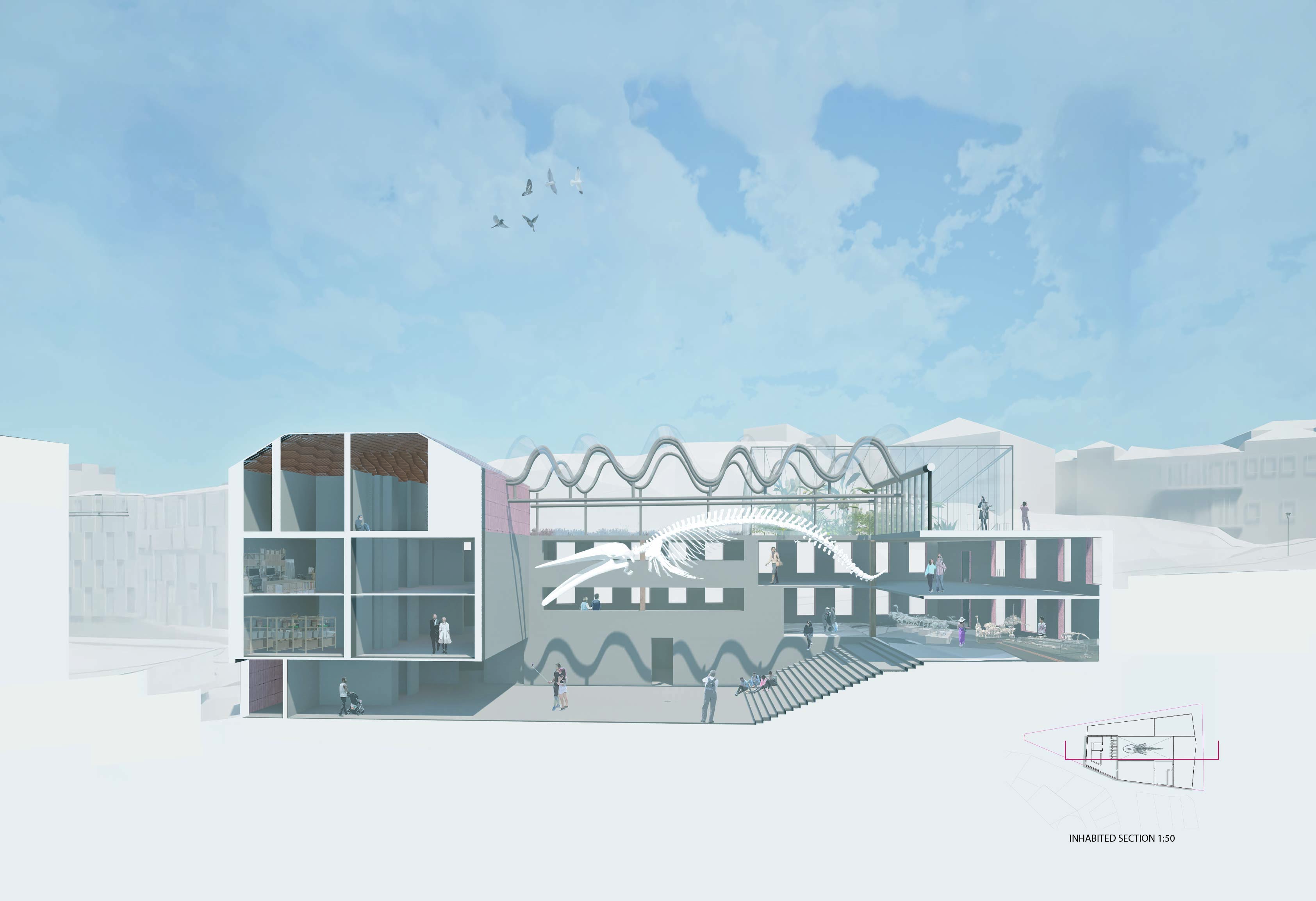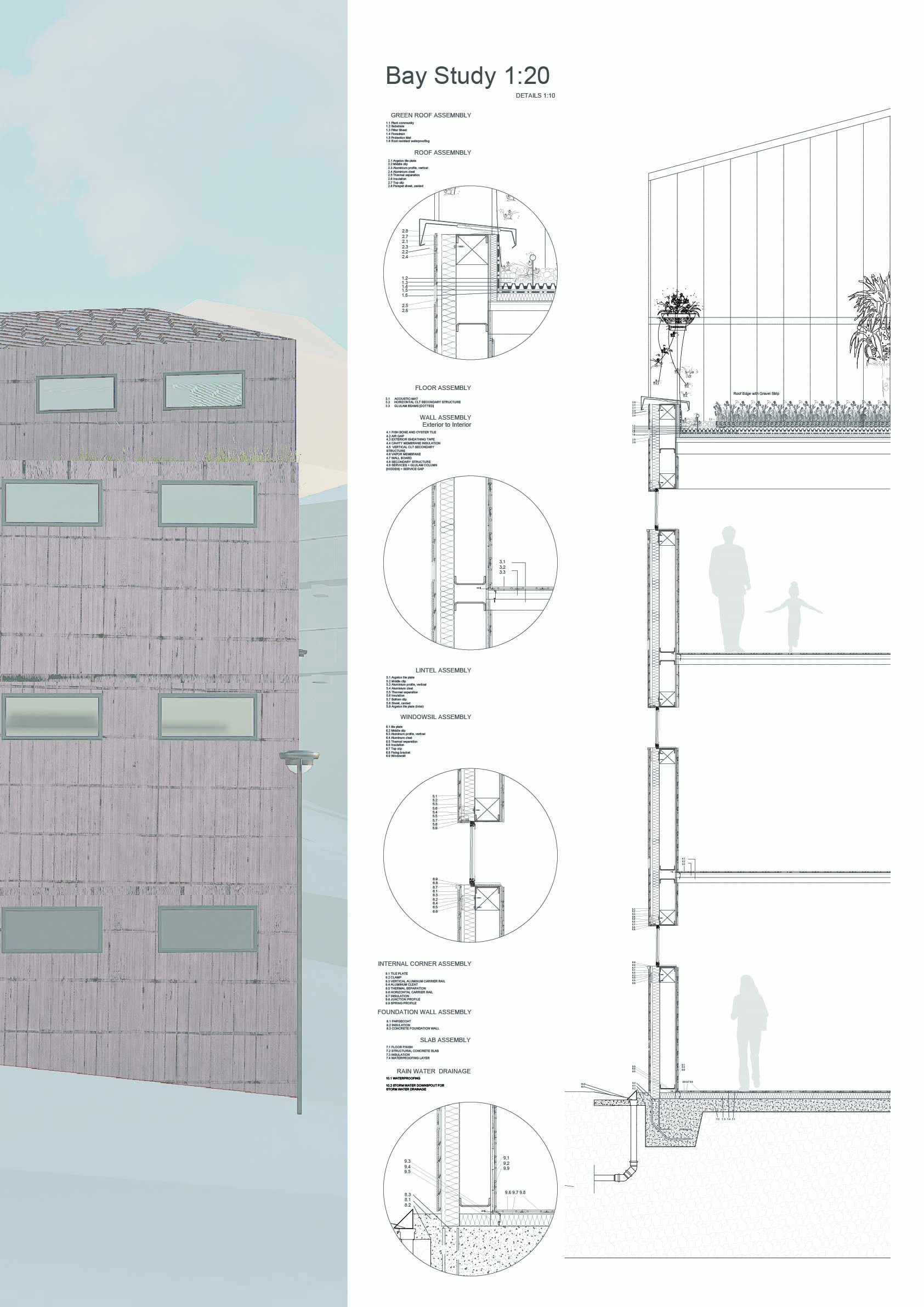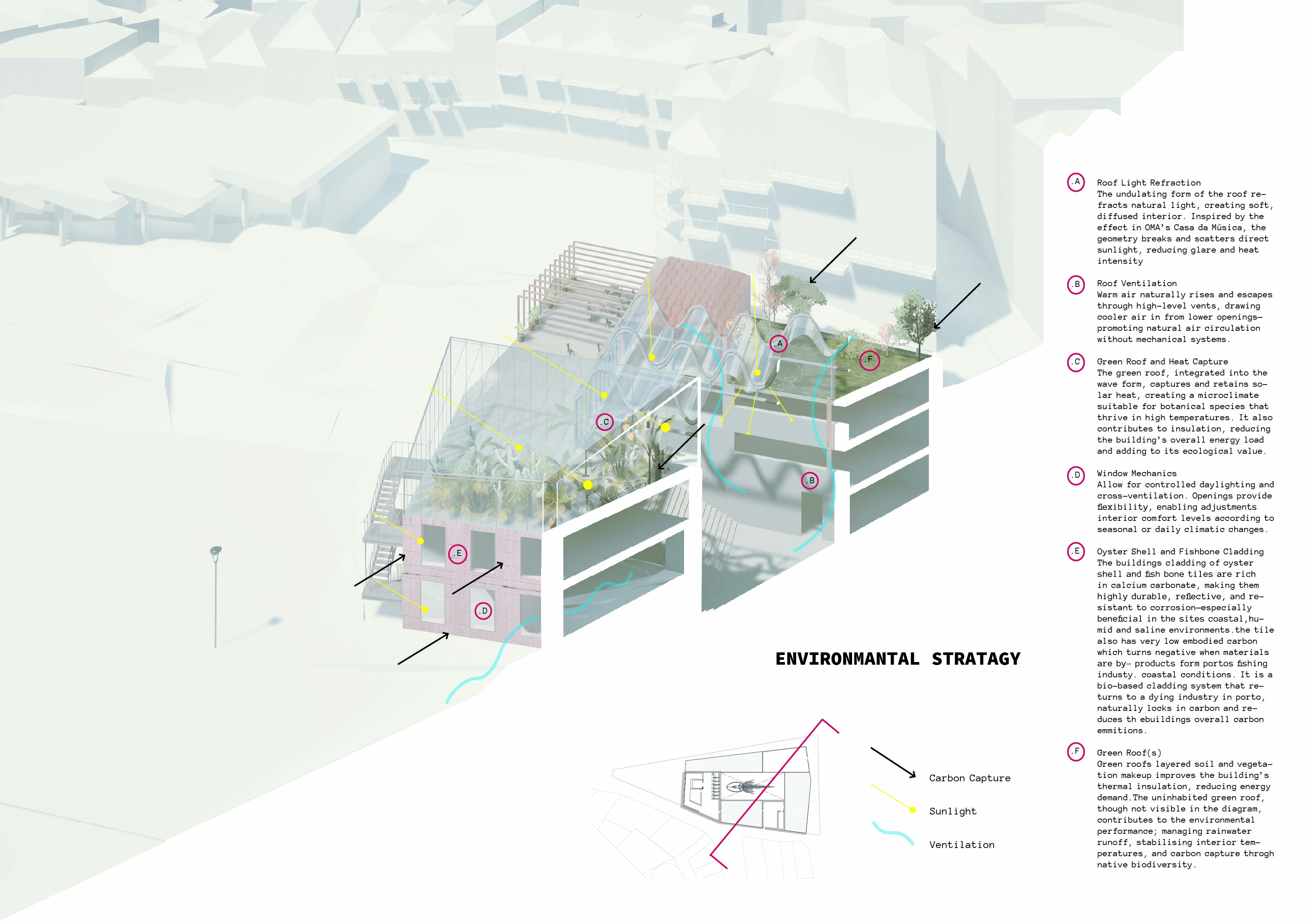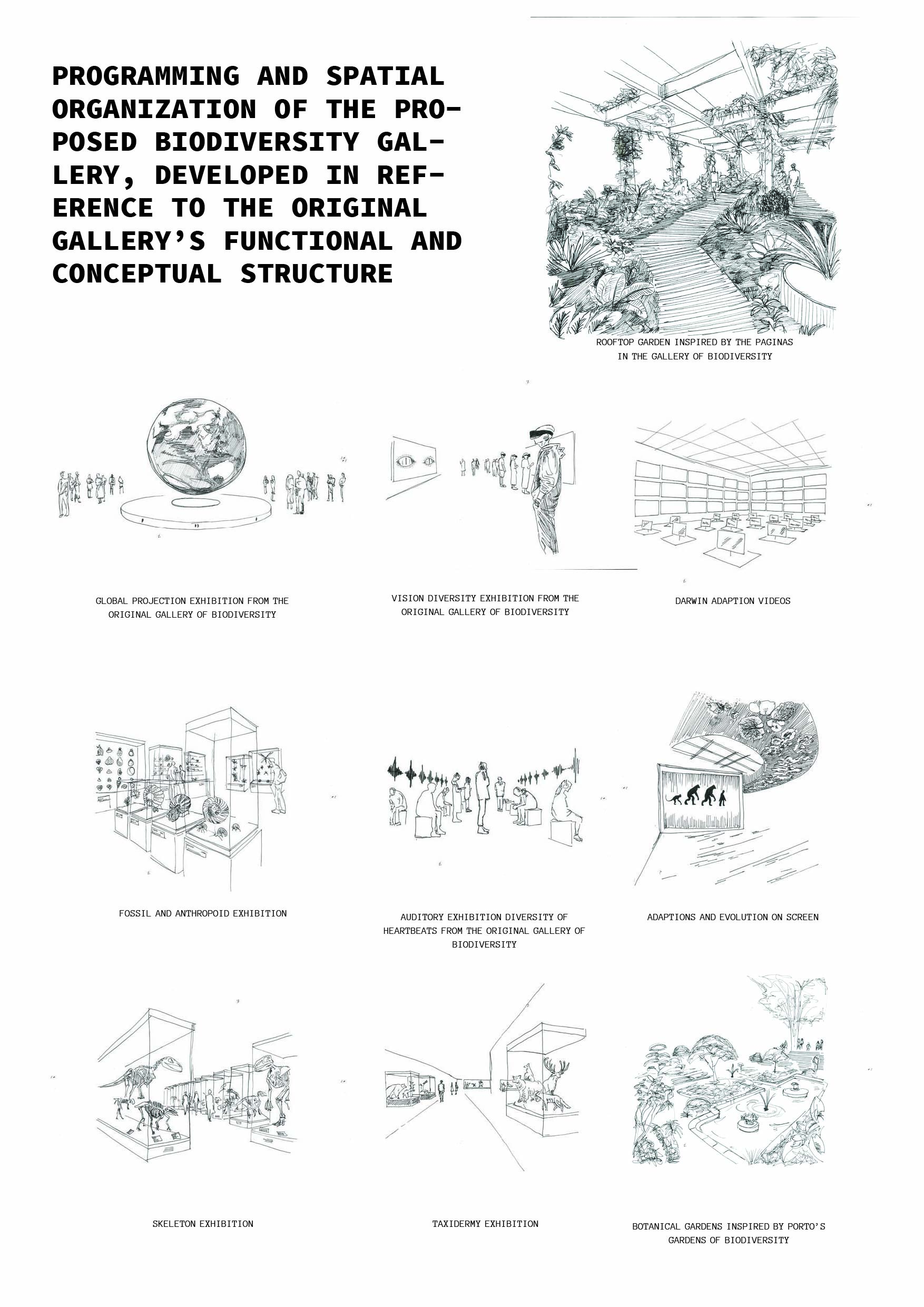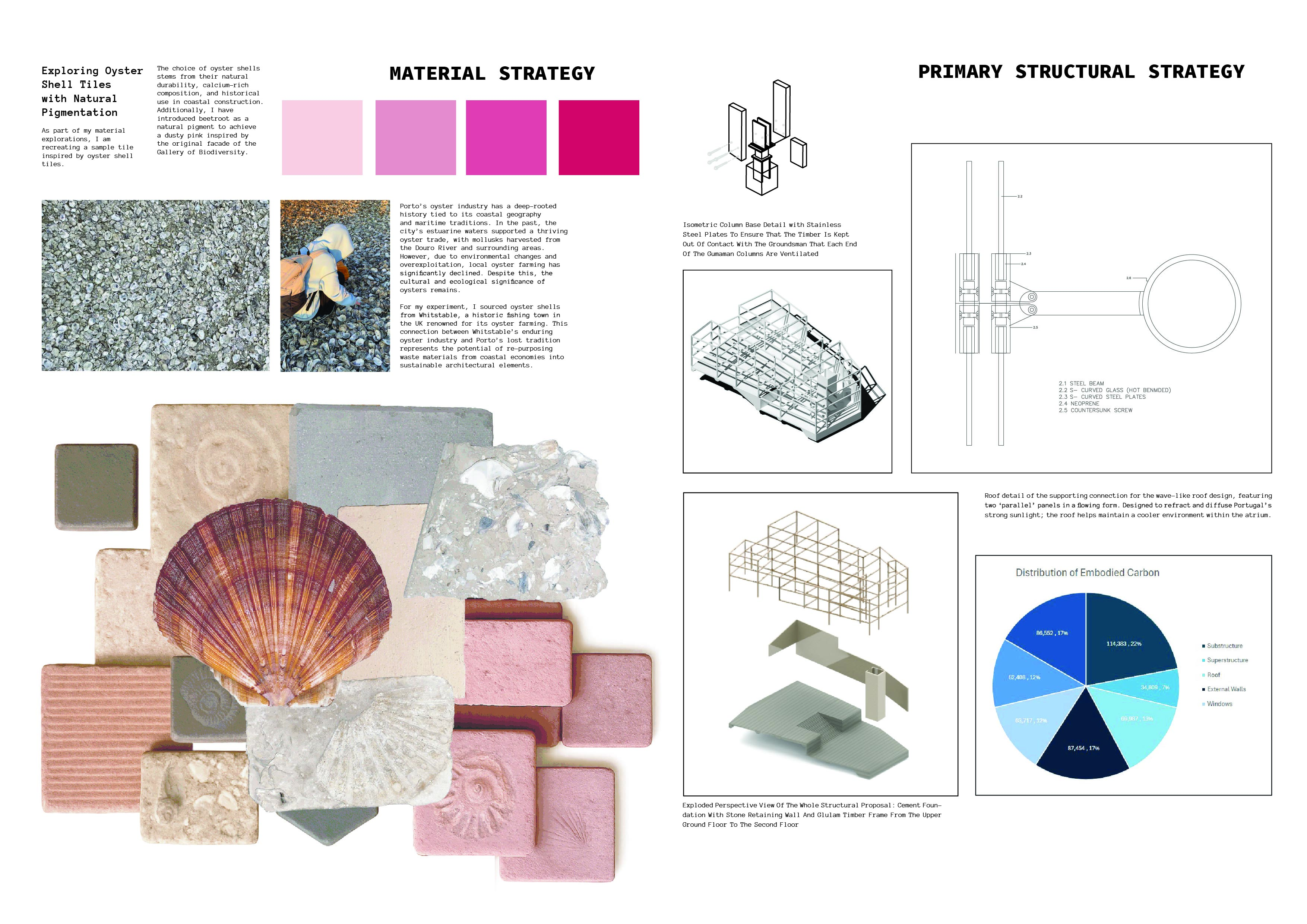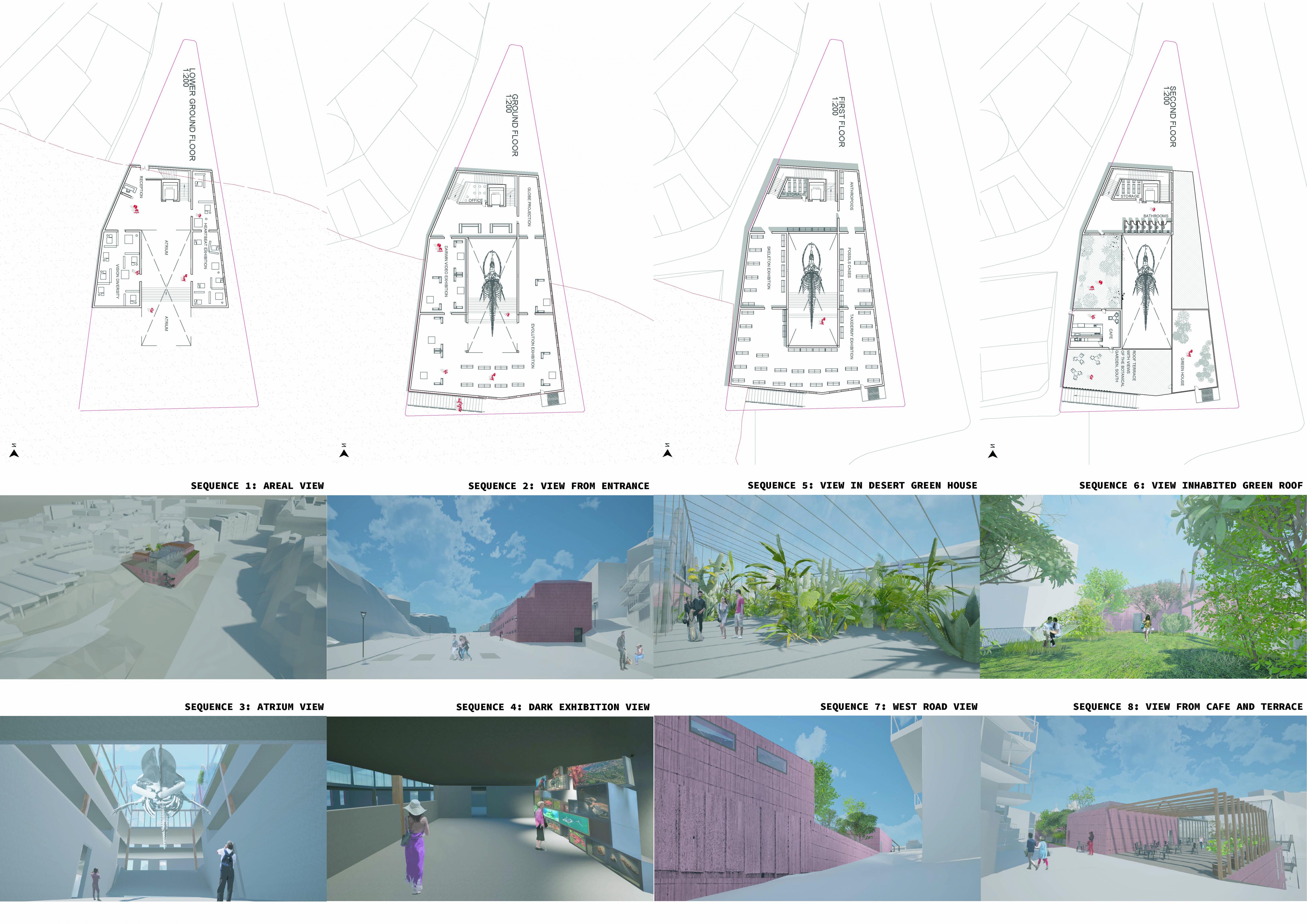This proposal reimagines and relocates the Gallery of Biodiversity to a more tourist-centric, pedestrian-rich site, making the museum more accessible to new visitors.
The experience begins at the north façade, directly facing São Bento train station and the Santo António Catholic Church. This façade is clad in custom tiles made from oyster shells and fish bones, with imprints of fossils and marine textures that reflect the internal programming of the museum.
Visitors enter through a narrow and dark reception space, descending to the lowest point of the central atrium. From here, they can look up at the iconic suspended blue whale skeleton, preserved from the original gallery. Exhibition spaces spiral around this central atrium, with stairs and a lift along the north side providing vertical circulation.
The spatial experience is guided by light; or the absence of it. Darker spaces offer a more immersive and sensory experience, while lighter spaces, higher up the building, support more traditional museum displays. This variation is driven by the site’s topography and the natural constraints of the retaining wall.
At the rooftop level, a greenhouse showcases exotic and desert species that thrive in the climate created by strong sun exposure. A small café, accessible from a characteristic western road, is integrated into this final experience. It reflects Porto’s strong café culture while offering a place to pause, with views of green surroundings and the city skyline.
Structurally, the building uses a glue-laminated timber frame for its primary structure. The retaining wall and lift shaft use exposed natural stone, anchored in a concrete foundation.
The wave-like roof serves both functional and symbolic purposes. It offers a dynamic backdrop to the whale and reflects sunlight in a way that softens its intensity, filtering it throughout the gallery according to the needs of each exhibition space.
Finally, I’ve experimented with tile-making to explore how shell and fossil imprints can create a tactile and meaningful façade, expressing both variation and practicality through texture and form.

